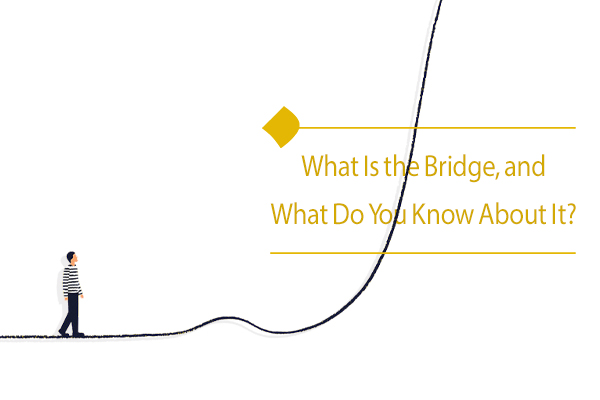Examining the Concept of the Bridge from the Perspective of Islamic Self-Knowledge
You have probably heard the term the Bridge[1]. It is among the facts closely associated with the Day of Judgment and the resurrection. Whenever the judgement of human deeds on the Day of Judgment is discussed, the image of the Bridge and the people crossing this difficult passageway inevitably comes to mind.
Most of us do not know much about the Bridge. We only know that it is a frightening and slippery passageway that passes through the depths of Hell, and all humans must cross this difficult passageway, narrower than hair and sharper than a sword on the Day of Judgment to be held accountable for their deeds. In the end, those whose deeds are accepted will cross the Bridge and reach Heaven, while those who have committed numerous sins will be stopped in the stations on the path for the judgement of their deeds for a long time.
Having limited information about the Bridge naturally raises numerous questions in the mind. Among them are:
- What is the truth of the Bridge, and where exactly is it located?
- Is it a Bridge in the gathering place of the Judgement Day that will come into existence later, or does it exist right now?
- What does it mean that the Bridge passes through the depths of Hell? Why do all humans, even those destined for Heaven, have to cross through Hell? And so on. In this lesson, we will delve into describing the truth of the Bridge and addressing the related questions.
Where Is the Bridge?
The first question regarding the essence of the Bridge is where exactly it is? Is it a bridge far from this world, built beyond the heavens and galaxies? Does the Bridge exist now, or will it come into existence in the hereafter?
When it is said that “the Bridge is a passageway in the hereafter that passes through the depths of Hell,” naturally, this interpretation comes to mind that the Bridge does not currently exist and it is a path that must be crossed after death and on the Day of Judgment. This interpretation stems from a mistaken understanding about the realm of the hereafter. This understanding introduces the hereafter as a separate realm which is independent of this world, distant from us in both space and time. But as we mentioned before, the hereafter is not a distinct place from this world or even beside it, and it is not that there exists a realm called the Hereafter beyond the clouds. The relationship between this world and the hereafter is like the relationship between the mother’s womb and this world, and just as this world encompasses the mother’s womb, the hereafter also encompasses this world. Therefore, we are on the Bridge right now, and it is not a path that will come into existence later. In fact, the Bridge is a truth which passes through our soul, not a path outside of the soul. But how do we move forward on the Bridge?
How Do We Cross the Bridge?
Another point about the Bridge pertains to the type of our motion on the path of the Bridge, which relates to its essence. As mentioned, the Bridge is a spiritual truth, not an external path. Therefore, our movement on the path of the Bridge is also an inward and substantial motion, a sort of becoming. We do not have any physical or spatial motion on the Bridge; it is not like what happens on the roads on earth. Instead, our speed, progress, stops, and regress on the Bridge all occur within us.
To better understand this, let us once again refer to the Law of Proportion and consider the movement of a fetus in the mother’s womb. How does the fetus move in the mother’s womb? Does the fetus travel a distance from the moment of the formation of the sperm until it transforms into a complete fetus? Naturally not. The process that the fetus undergoes from being a sperm to reaching full development is one of becoming and formation. The Bridge or the path the fetus goes through is not outside himself; this Bridge is within him, and the fetus treads the path of the Bridge within himself. Now, if he goes along this path in the right way, or in other words, moves on the “straight path,” he will be born healthy and sound. However, if he takes this path weakly, stops, or regresses, he will be born into the world with illness, weakness, or defective organs based on the level of his negligence. The same laws apply to our movement on the Bridge towards the hereafter. The straight path in this type of movement is a spiritual path from within ourselves towards God, and it has no end. Whoever acquires more divine names on this path will move faster.
Why Does the Bridge Pass Through Hell?
Other questions arise here: “Why does the Bridge pass through the depths of Hell, and what is meant by Hell?” There is a subtle point regarding the Bridge passing through the depths of Hell. If we understand the relationship between the world and the hereafter properly, this point becomes clear. A newborn entering the world is immediately assessed in the very first moment in relation to the living conditions of the world. Any incompatibility in him, depending on its severity and importance, will result in immediate or future suffering. For instance, a respiratory problem and the inability to breathe is an immediate problem that could threaten the newborn’s life right after birth, and it requires the creation of a specific environment instantly, while a slight difference in leg length of just a few centimeters could result in future difficulties. Just as we saw in this example, the Bridge of the newborn is the infant himself, and in fact, it is something that he has acquired in the womb and brought along. The suffering of Hell is also the consequence of what the infant has brought along with himself.
Our entry into the realm of the hereafter follows the same rule. Upon entering the hereafter, we are immediately assessed in relation to the living conditions of that realm. Similar to the newborn, our Bridge and the measuring factor are the extent to which we align ourselves with the living conditions of the hereafter. If we are not on the straight path, or in other words, if we do not align ourselves with the living conditions of the hereafter, we will be subject to immediate or future suffering based on the extent of this incompatibility.
With this example, the fact that the Bridge passes through Hell and the reason for the connection between the Bridge and Hell become completely clear. As we mentioned in previous lessons, Hell is the hospital of the hereafter, and any incompatibility, whether in this world or the hereafter, is referred to the hospital for correction and treatment.
In this lesson, we discussed the concept and essence of the Bridge. We learned that the Bridge is an existential truth within ourselves, a manifestation of our deeds and acquisitions of our soul. Therefore, some people pass through the Bridge while it is cold with no fire, and others face the fire, which is an allegory of suffering.
We hope that our explanations have helped answer your questions about the truth of the Bridge. If you still have any questions on this subject, please feel free to share them in the comments section.
References
[1]. As-Sirat. in Arabic, “Sirat” means a main road or a primary and clear path

